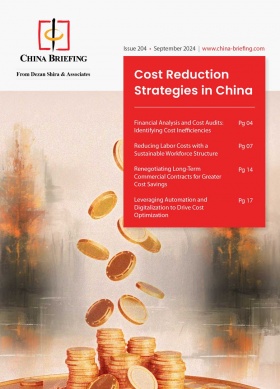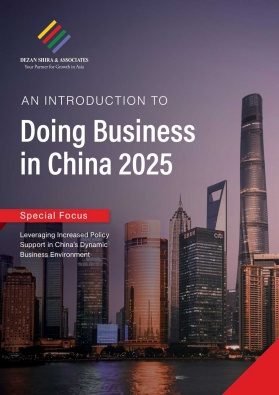Hainan to Launch Independent Customs Operations Dec 18: Why It Matters
Hainan Free Trade Port (FTP) will roll out zero-tariff and customs closure policies on December 18, 2025, creating a more efficient and open trade environment. These changes are expected to accelerate the port’s development into a global trade hub.
The Hainan Free Trade Port (FTP) has introduced a comprehensive set of measures designed to establish a highly open, efficient, and innovative customs environment to support the accelerated development of the port. These new “customs closure” policies are scheduled to take effect on December 18, 2025, marking a significant milestone in Hainan’s transformation into a globally competitive free trade hub.
Central to these policies are two zero-tariff initiatives: the first grants zero-tariff treatment for exports to the Chinese mainland of goods processed in Hainan that contain imported materials and achieve 30 percent or more added value; the second offers zero-tariff treatment for eligible entities importing certain goods from overseas into the Hainan Free Trade Port.
The reforms are part of a broader strategic plan initiated five years ago by President Xi Jinping, aimed at building a distinctive Chinese free trade port with cutting-edge policies that facilitate smoother flows of people, goods, capital, and data. The “customs closure” or “whole-island customs supervision” model will turn Hainan into a special customs zone with liberalized trade policies between the port and the outside world, while maintaining precise customs management between Hainan and the Chinese mainland. These measures promise to greatly enhance trade efficiency and market access, providing a solid foundation for Hainan to become an important gateway for China’s high-level opening to the world.
Zero tariff for value-added goods exported to the Mainland
Among the policy measures released in recent weeks are the Interim Measures of the Customs of the People’s Republic of China on the Collection and Administration of Taxes on Tariff-Exempt Goods Subject to Value-Added Processing in the Hainan Free Trade Port (herinafter, the “Interim Measures”). Released on July 23, the measures exempt goods produced by encouraged industrial enterprises in the Hainan FTP that contain imported materials and achieve an added value of 30 percent or more through processing within the FTP from import tariffs when entering the Chinese mainland.
“Encouraged industrial enterprises” refers to companies operating within industries included in the Catalogue of Industries Encouraged to Develop in Hainan Free Trade Port (2024 Edition), which lists 176 sectors across 14 categories, including agriculture, manufacturing, construction, tourism, and wholesale and retail.
Import value-added tax (VAT) and consumption tax will continue to be levied in accordance with applicable regulations.
To meet the criteria of “processing added value reaching or exceeding 30 percent”, the added value resulting from the manufacturing and processing of goods containing imported materials within the Hainan FTP by an eligible enterprise reaches or exceeds 30 percent of the combined value of the imported and domestically procured materials.
“Imported materials” refer to goods entering the Hainan FTP from abroad that have not completed import tax payment procedures, including bonded goods and zero-tariff goods. Bonded supervision measures shall be implemented for goods declared for export into the Hainan FTP’s special customs supervision areas.
Calculating the value-added content of goods
The value-added content of goods is calculated using the following formula:
Value-added percentage = [(Domestic sales price – ∑ price of imported materials – ∑ price of domestically purchased materials) ÷ (∑ price of imported materials + ∑ price of domestically purchased materials)] × 100%
If the result is 30 percent or higher, the goods are eligible.
The definitions are as follows:
- Domestic sales price: The actual transaction price when the goods are sold to the Chinese mainland.
- Imported materials: The total cost of materials imported into China used in making the product, including transport and insurance costs up to the point of entry.
- Domestic materials: The cost of materials bought within China (excluding VAT). If the material was produced within Hainan, its value can be subtracted from the domestic material cost.
If several registered companies in Hainan are involved in processing the product at different stages (for example, one company does assembly, another does packaging), their value-added contributions can be combined. In that case, the same formula applies, but the material costs and prices from all involved companies are added together.
Process to benefit from the zero-tariff policy
To benefit from the zero-tariff policy, companies must go through a structured registration and customs approval process jointly overseen by provincial authorities and the GAC.
The Hainan government will establish a public information service platform to support the registration of enterprises, materials, processed products, and related value-added processing activities. This platform also facilitates information sharing between the GAC and relevant local departments.
For a company to apply for the first time, it must submit an application and required documentation to a designated unit under the Hainan Provincial Department of Commerce. After a preliminary review at the city or county level and approval by relevant provincial departments, Haikou Customs assesses whether the enterprise meets customs supervision criteria. Once approved, the company is registered through the platform, including information on the enterprise itself, the materials and finished products involved, the production process, and other participating upstream or downstream entities.
Before transferring goods from Hainan to the Mainland under this policy, the registered company must declare the value-added process to the GAC. If the processing results in a value-added increase of 30 percent or more, the customs system automatically generates a confirmation number that allows the company to complete its import declaration and tax procedures without paying import duties.
In certain cases, even when the value-added threshold of 30 percent is met, the zero-tariff benefit does not apply. These include situations where the materials or processed products fall under tariff quotas, trade remedy actions, suspended concessions, or retaliatory tariffs (unless such tariffs are explicitly exempted). The policy also excludes products that have undergone only minimal or superficial processing, such as blending, labeling, simple cutting, or packaging, which are defined by the provincial commerce authorities. Other legal or regulatory grounds may also require that import duties be paid regardless of value-added status.
Tax policies for goods entering and leaving the Hainan FTP
On July 18, 2025, the GAC, State Tax Administration (STA), and Ministry of Finance (MOF) jointly released the Notice on the tax policy for goods entering and leaving the “first line” and “second line” of Hainan Free Trade Port and circulating on the island (hereinafter, the “Notice”). Among the tax policies outlined in the Notice, certain eligible entities are permitted to import goods from outside of China at a zero percent tariff rate, provided the goods are not included in a catalog of taxable imported goods.
More broadly, the Notice outlines the import duties and tax policies for goods entering and exiting the Hainan FTP from outside of China, called the “first line”, and those entering the Hainan FTP from the Chinese mainland, called the “second line”.
The tax policies for these two lines are as follows:
First line: Established between the Hainan FTP and other countries and regions outside the customs territory of the People’s Republic of China.
Goods entering the Hainan FTP through this first line will be subject to varying management mechanisms to determine taxable or duty-free status. These mechanisms are as follows:
- Goods included in a catalog of taxable imported goods will be subject to import tariffs, import VAT, and consumption tax.
- Goods imported by companies registered in the Hainan FTP with independent legal person status, as well as public institutions within the Hainan FTP and approved non-profit private entities engaged in science and technology or education registered in the Hainan FTP (herinafter referred to collectively as “eligible beneficiary entities”), are exempt from import duties, import VAT, and consumption tax, provided the goods are not listed in the catalog of taxable goods.
- With the exception of the goods listed above, any goods currently subject to bonded or reduced-tariff imports, as well as other imported goods, are subject to import duties, import VAT, and consumption tax.
The authorities will also establish customs electronic accounts for zero-tariff goods.
Customs procedures for specific duty-exempt goods will not be applied, while audits and inspections will be conducted as needed.
A list of eligible beneficiary entities will be determined and dynamically adjusted by the Hainan provincial government, and filed with relevant departments such as the MOF, the GAC, and the STA.
Second line: Established between the Hainan FTP and other areas within China’s customs territory.
Under the second line, zero-tariff goods and their processed products entering the Mainland through the “second line” are subject to the following management mechanisms:
- Eligible entities shall complete the relevant customs procedures and make supplementary payments of import duties, import VAT, and consumption tax on the imported materials.
- Goods for which import taxes have already been paid or supplemented during import through the “first line” or during circulation within the island will not be subject to additional import taxes.
- Goods for which domestic VAT has already been paid during circulation within the island will not be subject to additional import VAT.
- Goods for which all import taxes have been paid or supplemented will be managed under domestic circulation regulations, and domestic VAT and consumption tax will be levied as prescribed.
Goods entering the Hainan FTP from the Mainland via the second line are managed as domestic goods, while goods exported from the Hainan FTP through the first line are subject to export regulations.
Circulation of zero-tariff goods within Hainan
Zero-tariff goods and their processed products that circulate within the Hainan FTP are also subject to certain tax and duty rules depending on the status of the entity that is trading in them. These rules are as follows:
- When zero-tariff goods and their processed products circulate between eligible beneficiary entities, they are exempt from paying import tariffs, import VAT, and consumption tax. Instead, they will be subject to the domestic VAT and consumption tax. Eligible beneficiary entities may voluntarily choose to pay the import tariffs, import VAT, and consumption tax.
- When eligible beneficiary entities circulate zero-tariff goods and their processed products to non-eligible entities and individuals within the Hainan FTP, they must supplement import duties, import VAT, and consumption tax based on the imported materials, and domestic VAT and consumption tax will also be levied in accordance with regulations.
- Goods for which all import taxes have been paid or supplemented shall be managed according to domestic circulation regulations, and domestic VAT and consumption tax shall be levied in accordance with the law.
Simplified customs procedures for trade through the Hainan FTP
On July 23, the GAC also released another set of measures, titled the Measures for the Supervision of Hainan Free Trade Port (hereinafter, the “Supervision Measures”), which aim to establish a clear and efficient regulatory framework for customs supervision within the Hainan FTP. The Supervision Measures simplify procedures and outline the customs processes for zero-tariff policies.
As prescribed in the Supervision Measures, the Hainan FTP will establish advanced administrative facilities to facilitate customs supervision and streamline trade processes. Customs authorities will develop a smart customs supervision system and platform tailored to the needs of the Hainan FTP, fully utilizing modern technology and information systems to enable intelligent and efficient customs procedures for enterprises and organizations.
Additionally, Hainan Province will set up the China (Hainan) International Trade Single Window, incorporating specialized application functions designed specifically for the FTP. This platform will serve as a centralized hub for handling port and international trade-related business, simplifying processes and enhancing operational efficiency.
Customs procedures for zero-tariff goods
Goods imported through the Hainan FTPs open ports, including bonded and zero-tariff goods, will generally be released directly by customs unless they require inspection, quarantine, or licensing as mandated by law, with specific regulations on direct release to be developed separately.
Zero-tariff goods are also exempt from specific customs regulations related to duty exemptions and tax reductions, with detailed management rules to be formulated separately.
For zero-tariff goods and their processed products moving from Hainan FTP to the Mainland, eligible entities must complete customs procedures, and customs will collect import duties, VAT, and consumption tax accordingly. If the relevant import taxes have already been paid or supplemented either during import or circulation within the island, customs will not charge those taxes again upon entry to the mainland. Similarly, domestic VAT already paid within the island will not be collected again.
Goods produced by encouraged industrial enterprises in the Hainan FTP containing imported materials and having 30 percent or more processing value added that are subject to zero-tariff treatment are exempt from import duties when entering the Mainland. However, import VAT and consumption tax still apply, with detailed tax management rules to be separately issued. Once goods entering the Mainland have paid all required import taxes and submitted necessary licenses and documents, they will be managed under domestic circulation rules and will no longer be subject to customs supervision.
Why does it matter to FIEs?
For foreign-invested enterprises (FIEs), the rollout of Hainan’s zero-tariff and customs closure policies on December 18, 2025, presents a significant new opportunity to streamline operations and reduce costs when engaging with the Chinese market. The new framework allows FIEs to import raw materials and components into the Hainan Free Trade Port without paying tariffs, and—if their processing activities in Hainan generate at least 30 percent added value—export the resulting goods to the Chinese mainland tariff-free. This creates an attractive channel for companies seeking to maintain access to China’s vast consumer market while optimizing supply chain efficiency and cost structures.
In addition, FIEs registered in Hainan and operating in encouraged sectors will be able to import certain goods from overseas—such as equipment, technology, or production inputs—completely free of import tariffs, VAT, and consumption tax. This substantially lowers the cost of capital investment and daily operations for foreign companies establishing or expanding a presence in Hainan.
The simplified customs procedures and digitalized trade infrastructure—including the new smart customs system and International Trade Single Window—are designed to reduce administrative burdens and improve clearance times. For foreign enterprises unfamiliar with China’s often complex customs environment, this presents a more predictable and transparent process for moving goods in and out of the FTP.
Strategically, Hainan’s customs closure model allows for differentiated trade policies between the Free Trade Port and the Chinese mainland, as well as between Hainan and overseas markets. This gives FIEs greater flexibility in managing cross-border trade flows while benefiting from preferential policies at both ends. As geopolitical tensions and supply chain realignments continue to influence global investment decisions, Hainan’s enhanced policy framework positions it as a valuable location for foreign companies to establish regional headquarters, manufacturing bases, or logistics hubs that serve both China and the broader Asia-Pacific region.
In short, the upcoming policy shift provides foreign-invested enterprises with a compelling incentive to reevaluate their China strategy and consider Hainan not just as a pilot zone, but as a long-term platform for growth and regional integration.
About Us
China Briefing is one of five regional Asia Briefing publications, supported by Dezan Shira & Associates. For a complimentary subscription to China Briefing’s content products, please click here.
Dezan Shira & Associates assists foreign investors into China and has done so since 1992 through offices in Beijing, Tianjin, Dalian, Qingdao, Shanghai, Hangzhou, Ningbo, Suzhou, Guangzhou, Haikou, Zhongshan, Shenzhen, and Hong Kong. We also have offices in Vietnam, Indonesia, Singapore, United States, Germany, Italy, India, and Dubai (UAE) and partner firms assisting foreign investors in The Philippines, Malaysia, Thailand, Bangladesh, and Australia. For assistance in China, please contact the firm at china@dezshira.com or visit our website at www.dezshira.com.
- Previous Article How to Apply for Additional VAT Deduction for Advanced Manufacturing Companies in 2025
- Next Article La Cina introduce gli standard nazionali per i dati contabili dei giustificativi elettronici






